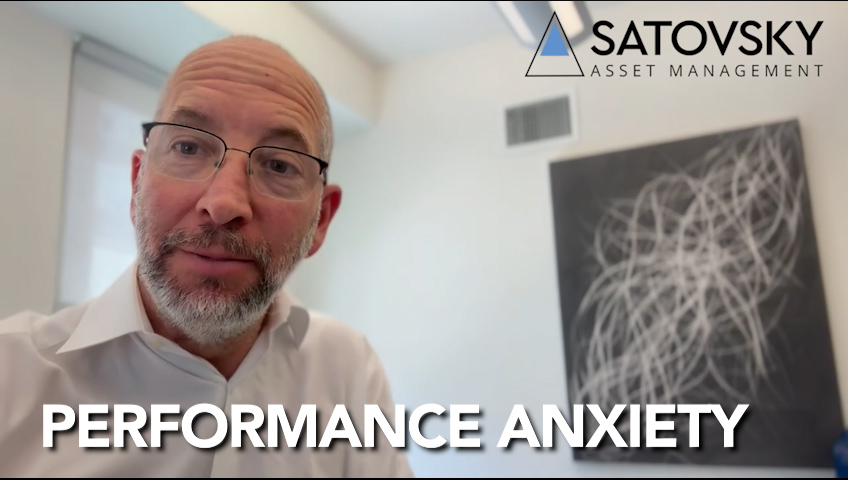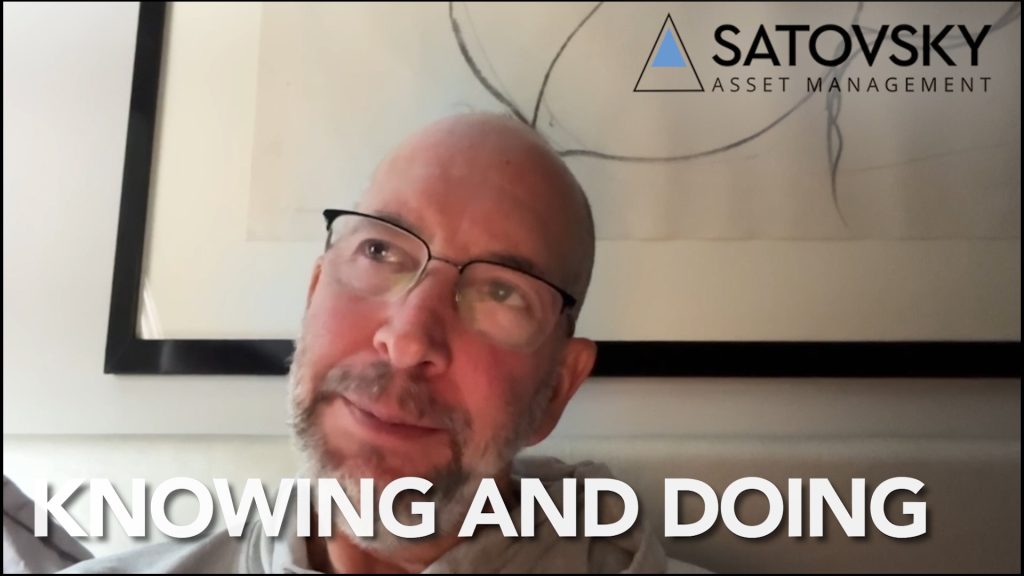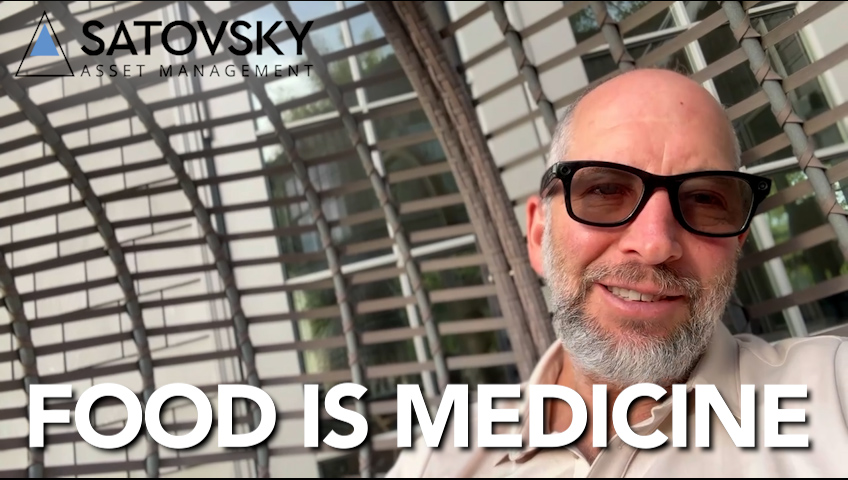In this excerpt from SAM’s recent webinar event, we address anticipated inflation as the economy begins to re-open by considering historical inflation trends and the key drivers of inflation activity. This post is the second of a 3-part series of excerpts from our June 2021 webinar: The Economy is Re-Opening, What Is The Path Forward?
Are We Going To Get Inflation?
We wanted to show this in context, and this is a concern mainly because the U.S. has seen fairly tame inflation of 2-3% over the past 25 years, and really the only time where we’ve seen inflation was in the 70s and early 80s.
Right now, there’s a lot of concern because the last reading on CPI (Consumer Price Index) was above 4%, which is above our norm of 2.2-3%.
But this needs to be taken in context because if you think about what took place from March to June of last year (2020), we actually had some slight deflation as our economy shut down. So, when you are coming off a low base, these are year over year figures, so the numbers are a little bit distorted as our economy re-opens.
Velocity of Money vs. Supply of Money
Now when people talk about inflation, the big thing that everyone talks about is: ‘wow we’ve seen a tremendous amount of money supply come into this system over the past year.’
And what you can see on that green line, the lime green line, is that money supply last year increased by over 25%. The last time this happened was during the great depression, and everyone thinks ‘oh, well money supply increased so much, of course we’re going to see inflation.’
Well, this is not necessarily true because if you delve deeper into say an Economics 130 or 140 course you’ve understood the concept of the velocity of money where it doesn’t necessarily matter about how much money is in the system, which the Fed can easily add or take away, it matters how quickly money’s moving around the system. How quickly I am going to shop, and then that person at the shop is buying another good, and then Christine is buying something at the same shop– and money is really moving around the system quickly and that’s when you start to see inflation.
And it’s really only when you start to see what we show over to the left on the chart where in 1975 you see the velocity of money (red line), and the supply of money (green line) – when money movement started to pick up, the supply of money went down, and lo and behold, in 1975, you started to see inflation.
Again, we then got inflation a little bit under control, and then saw the same thing happen in the early 80s where, again, you see velocity of money (red line) start to pick up, supply comes down (green line), and inflation goes up.
Bringing it back to the right side of the chart, we can see that yes, money supply did pick up dramatically last year (2020), but look at the red line– the red line is the velocity of money, which plummeted materially, as well. So, this is something that really needs to be looked at a little more seriously.
Types of Inflation
Now there are two types of inflation, both of which we’re experiencing right now. The two types are demand-pull and cost-push.
Demand-Pull Inflation
Demand-pull is essentially when demand for goods has increased so prices go up. The best example of this, in my opinion, is the iPhone. If everyone recalls when the iPhone came out, companies were giving it away for free; AT&T, Verizon, they were giving away the iPhone for free because no one was sure what the market demand for the product was. Well, 10+ years later, as we know what the demand for the iPhone is now, you can’t buy a brand-new iPhone for less than a thousand dollars.
So again, as demand goes up for a product, the company pushes up the price because demand has increased.
Cost-Push Inflation
The other type of inflation is cost-push, which essentially happens when there are supply disruptions, whether that be in labor, capital or materials. When there are disruptions in labor, capital or materials, input costs increase, and companies push those input costs onto the consumer, which raises prices.
So, for demand-pull inflation this chart shows personal consumption in America, and what you can see is that during 2020 demand plummeted. From January 2020 to June 2020, you can see that demand fell off a cliff.
And from there, as the economy has started to re-open, and people have come to grips with COVID-19, and a lot more people are going out and about, you can see demand has increased, but what you also see is that demand has not gotten back to the previous highs that we saw before COVID-19.
So, do we expect some demand for inflation? Yes, but this is mainly short-term to make up for the loss of consumption during COVID-19.
Another example of cost-push inflation that’s going on right now is in the semiconductor industry, and what people have to understand is that we live in a global economy; the supply chain is global in nature. The U.S. didn’t just shut down– China shut down, Europe shut down, Japan shut down, the Middle East shut down. Every single economy shut down, and as every economy starts to re-open, and given our supply chain is now global in nature which has its benefits, the short-term cost of that is that there’s going to be some short-term supply disruptions, which has hurt the semiconductor industry. As a result, you start to see chip prices go up, which will affect everything from the production of phones to cars, but mainly we think this will be transitory in nature.
How much inflation is the global market anticipating?
Despite what we think, you’re probably asking: well, what does the market as a whole think?
And the best way to see what the market as a whole thinks is to look at the spread between a treasury bond and its corresponding treasury inflation protected security or TIPS. So what is the yield on the treasury versus the yield on the TIPS, and if you look at the spread between those two, you’ll see what the market as a whole is forecasting what inflation will be. And this is a global market– The United States 10-year treasury is not just owned by U.S. citizens, it is owned by countries and people across the globe. It is also a very liquid market and is very informationally efficient.
What you see here is that the 10-year TIPS spread is saying the market as a whole thinks that inflation will be about 2.4% over the long-term, which is in line with historic norms.
Okay, so let’s just say we’re wrong, and the entire globe is wrong with what’s being priced in in the TIPS’ market. What do you do to protect against inflation?
What can you do to protect against inflation?
Well, what we’ve shown here is the annual returns and the annualized returns of the entire period of the last time we saw inflation in our country, which is, as I said earlier, in the 70s and early 80s.
What you can see here from the assets and asset classes that we own for clients, the place to be was to own equities, whether it be the S&P 500 which returned 7.7% per year, small caps – as we want to lean on smaller companies – have returned 14.3% a year, Berkshire Hathaway, which we own for clients, returned 24.4% per year, and REITs returned 9.3% per year.
Now, the one thing that’s different between then and now (if you look at the yellow bar), is that the U.S. treasury 10-year bond at the time averaged a 9.1% yield. Now, that is vastly different than it is today where the 10-year treasury is yielding anywhere between about 1.5% to 1.6%. And, if inflation is 2-3% you’re actually getting a negative real return on owning treasury bonds.
So, the best way to think about it if you want to protect yourself against inflation, is to continue to own businesses, or as we talk about it here ‘equities’, because at the end of the day one person’s inflation is another person’s revenue.
At SAM our dedicated team of professionals consider it our fiduciary duty to provide clients with the highest standard of care and service in the advisory world. To learn more about how we may help you, get in touch with a SAM advisor today.



